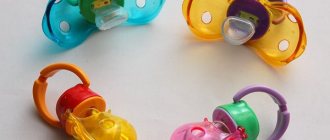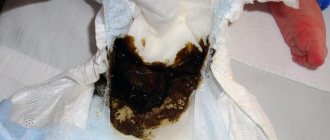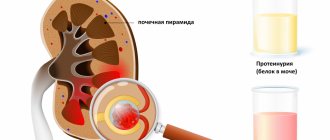Expert commentary
In infants, blood is taken as soon as possible after feeding - approximately three hours and before the next feeding. The collection time does not depend on whether the baby eats breast milk or formula. This time period is necessary to ensure the quality of research results. To drink or not to drink? Due to the natural thickening of blood in a hungry child, blood sampling may be somewhat difficult. Correcting this condition is very simple - just give the baby clean drinking water without gas 15-20 minutes before donating blood. Babies over 6 months old can be given water on their own, and with infants you can use bottles, spoons, and a syringe without a needle. 20-30 ml of clean water will be enough for a baby. Why give your child extra food before donating blood? Even if you do not give your child water until 6 months, according to WHO recommendations, it is recommended to give the baby a little drink before donating blood, especially from a vein. The volume of circulating blood in the vessels increases, the blood does not thrombose the needle and sampling from the vein is quick and comfortable. Where is blood taken from newborns? Another feature of infants is very thin blood vessels. The usual cubital vein is not always suitable for drawing blood: for a more comfortable procedure, the nurse can choose a “stronger” vein on the hand, leg or head. The main thing to remember is that a calm mother means a calm child. And our experienced nurses will draw blood as delicately and unnoticed as possible for the baby.
Be healthy!
Your KinderKlinik pediatrician
Krepak Maria
When should you donate blood?
For the first time, an extended blood test is taken from the child immediately after birth. Thus, it can be used to detect possible infections, hematopoietic disorders, and to exclude or confirm the presence of allergic diseases.
In the future, preventive studies are prescribed by the doctor as the child grows older, as well as unscheduled if indicated.
The blood test norm for a 2-month-old baby differs from the normal values for an adult. This is why it is important to have the results assessed by an experienced pediatrician.
Indications for conducting an extended blood test are:
- Long-term simple diseases (ARVI, stomatitis, tonsillitis).
- Complications of diseases, severe infections (pneumonia, bronchitis, otitis).
- Diseases in young children in the chronic stage.
- Complaints that cannot be explained during a routine examination.
- Suspicion of serious pathologies (blood cancer, neoplasms of various locations).
A complete blood count (CBC) is included in a set of preventive tests for children under 1 year of age.
How to prepare
OAC differs from other studies in that it does not require complex preparation. In case of emergency admission to the hospital, it can be done at any time of the day or night, regardless of eating and drinking.
If there is no rush, i.e. The study is prescribed by a doctor as planned; to increase the accuracy of the results, the following simple rules should be followed:
- Take the test on an empty stomach early in the morning. At least 2-3 hours should pass since the last feeding.
- It is important that the baby gets a good night's sleep and rest before the examination, so he will be less nervous and will tolerate the procedure more easily.
- Parents need to reassure the child and prepare him for the procedure. This is to minimize stress that could affect assay parameters.
Blood for laboratory testing in children aged 2 months is taken from a finger. In weakened, low-weight infants and infants with delayed physical development, it is allowed to take material from the heel, as in newborns.
In emergency situations, when it is necessary to carry out many tests (general blood count, biochemistry, coagulogram, culture for sterility), blood is taken from a vein.
KinderKlinik features
Each KinderKlinik branch has its own laboratory with the following opening hours:
- Branch on the street. Demeevskaya 16 - around the clock, together with the children's hospital
- Branch on the street. Kakhi Bendukidze 2 – from 8 to 20.00
- Branch on the street. Alexandra Mishugi 2 – from 8 to 20.00
- Branch on the street. Vyshgorodskaya 45/2 - around the clock, together with the children's hospital
In addition to basic research (blood, urine, blood biochemistry, etc.), each laboratory also has a wide range of rapid tests to identify:
- intestinal infections: enteroviruses, salmonella
- helminthic infestation
- respiratory viruses: antigens of influenza A and B viruses, adenovirus
- group A streptococci (the most common causative agent of sore throat)
- coronavirus infection
Diagnostic materials are presented in each of the KinderKlinik laboratories, and in the departments on the street. Demeevskaya 16 and st. Vyshgorodskaya 45/2 are available around the clock.
Need an examination?
Sign up
Callback form
Application has been sent, we will contact you soon
Preparation and procedure for taking a general blood test for a newborn and infant
If the child has been prescribed a clinical blood test, then the day before parents need to familiarize themselves with the general rules for taking this test:
- OAC is usually taken in the morning (except in urgent cases).
- The general rule for everyone is to donate blood on an empty stomach. But for newborns and infants, this condition is not at all necessary, because feeding regimes for all babies are different (a child can eat at night or early in the morning).
- The laboratory technician must always work in protective rubber gloves, using only disposable sterile instruments. Therefore, it is best to purchase disposable gloves, a special scarifier and alcohol wipes (or cotton wool and alcohol) at the pharmacy before taking the test.
- Currently, special automatic scarifiers have been developed for small children, delivering a minimum of pain and discomfort to the baby during the procedure.
- Blood is taken from the ring finger on the left hand. The finger is first wiped with alcohol; after the puncture, the first drop of blood is removed with an alcohol wipe.
- After collecting the required amount of blood, the puncture area must be covered with a cotton swab moistened with alcohol. Since the baby is small, the mother must hold the cotton swab for some time.
It is important for young parents to know that the procedure is quite unpleasant and painful for the child, so the baby (especially over the age of six months) will be capricious and try to remove the handle. Therefore, you need to hold the baby tightly, and, of course, calm him down.
Blood test for genetic diseases
Identification of genetic abnormalities is carried out in newborns in the maternity hospital. To do this, you need a few drops of blood from the heel. The taken material is placed on a special test strip, which is subsequently sent for analysis to the laboratory. A blood test from the heel at this stage allows not only to identify some abnormalities, but also to take timely measures to treat them . In some cases, it is possible not only to reduce the development of a genetic disorder, but also to completely eliminate the consequences of the disease.
A blood test in a newborn reveals the following abnormalities:
- Hypothyroidism. It is characterized by insufficient production of hormones by the thyroid gland due to its abnormal congenital development. Without therapy, children with this disorder are more likely to suffer from growth retardation, mental retardation, and also differ from healthy peers in terms of level of intellectual development.
- Phenylketonuria. With this deviation, a lack of tyrosine occurs, which is responsible for metabolism in the brain, which threatens a severe decrease in the child’s intelligence, which will manifest itself several years after birth.
- Cystic fibrosis. This pathology is characterized by the viscosity of the pancreatic and sweat glands. The viscous secretion closes the ducts of the glands, which leads to pathology in the development and functioning of the digestive, respiratory and other systems.
- Galactosemia. Pathology of metabolic functioning in which glucose synthesis does not occur. Thus, the child does not accept mother's milk, and as a result there is a lack of nutrition, the digestive system suffers, nervous exhaustion and, rarely, cataracts.
- Adrenogenital syndrome. Characterized by a lack of cortisol. Symptoms of this pathology are deviations in the development of the reproductive system organs, weight loss, diarrhea, and vomiting.
Blood test norms for infants
Hemoglobin is part of red blood cells. This protein substance combines with oxygen and releases it where it is needed. In newborns, hemoglobin should be from 134 to 198 units. A baby's hemoglobin level should be 107-171 units per month. The amount of hemoglobin can determine the severity of anemia.
ESR is the rate of red blood cell union. ESR indicators are needed to determine the severity of the inflammatory process and make an accurate diagnosis. ESR increases during intoxication, inflammatory processes, chronic infections, after massive blood loss, and so on. ESR decreases with diseases of the gallbladder and liver, erythrocytosis, hyperproteinemia and the use of certain substances.
Red bone marrow produces platelets of blood called platelets. They last from two to ten days and are destroyed in the spleen and liver. Platelets form a clot and prevent bleeding, as they close the damaged vessel. Blood test standards for infants say that their platelet count should be 100-420*109/l. With an increase in the number of platelets, thrombocytosis appears, and with a decrease, thrombocytopenia appears.
Infant blood test explanation
In order to prevent the development of serious diseases in children, you need to be regularly examined by a pediatrician and have your blood tested. It is impossible to draw conclusions based on average statistical indicators; a blood test for an infant should be deciphered by a specialist. If a child has undergone surgery or been ill, the results of a general blood test may not be accurate. Normal indicators are not a sign of the absence of disease; the analysis needs to be deciphered as a whole; it is the ratio of the various elements that is indicative.
A blood test helps identify the presence of inflammation, worms and anemia. Clinical analysis should be done for prevention and during treatment.
For biochemical analysis, blood is taken from a vein. Before donating blood, you should not eat or drink water for six hours. This analysis helps determine the condition of systems and organs, identify rheumatic and inflammatory processes, as well as metabolic disorders.
How to take a blood test for a baby?
Blood must be donated on an empty stomach. Since this is not possible for infants, the mother should try to bring the baby to the clinic after feeding and wait about two hours. If a child ate before donating blood or screamed loudly during collection, his ESR readings may be increased.
If you need to donate blood immediately after visiting the pediatrician, the laboratory technician must be warned that the child has recently eaten so that the specialist takes into account any errors.
General blood test for infants
The most informative, simple and accessible research method is a general blood test. It can be done from an early age, namely from birth. In order to get a reliable result, blood must be donated on an empty stomach, that is, without eating for twelve hours. Drinking water is allowed. The baby eats every two hours, he does not have a fasting state, so you need to donate blood two hours after eating.
A general blood test is taken for an infant in case of a protracted illness, when complications appear after an illness, before vaccination, and simply once a year for prevention.
The analysis requires capillary blood, which is taken from the toes and hands, as well as from the heel. Blood is dripped onto glass and rubbed with another glass. Then the laboratory assistant counts the number of blood cells under a microscope.
Blood consists of red blood (hemoglobin, red blood cells, hematocrit, color index) and white blood (leukocytes). Types of leukocytes: neutrophils, eosinophils, lymphocytes, basophils, plasma cells and monocytes. In addition to the number of cells, the examination pays attention to the shape, size and maturity of red blood cells.
Red blood cells carry oxygen and take up carbon dioxide. The norm of red blood cells depends on the age of the child. If there are few such cells in the blood, this means that a person has anemia - a pathological condition in which the oxygen supply to the body is disrupted. Anemia is a symptom of many diseases; it often occurs due to damage to the blood system.











